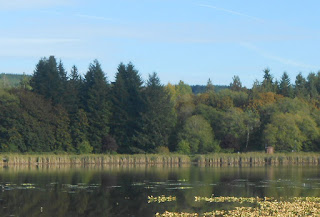Let me share some things I have discovered by studying trees.
Trees in the distance can easily be identified by their shape.
By their silhouette we recognize them.
So draw a the tree's shape to communicate its identity.
So draw a the tree's shape to communicate its identity.
In addition to being cognizant of a tree's shape, we
also need to consider its direction of growth, it's gesture and
its personality. Yes, trees have personality or at least they suggest certainly personality traits. A tree can be strong and
resilient like an oak or delicate and lyrical like a willow tree. Also
remember, a tree is alive, growing
upward to catch the sunlight's energy.
Look for the tree's personality.
Strong Graceful Stately
Keep this in mind as you draw your tree.
It will help you represent the distinct character of your tree.
As you study your tree, note the dark and light shapes.
These give your tree form.
Shadows falling on a tree trunk give form and shape to the trunk.
Note how the shadows follow the contour of the trunk.
Trees cast beautiful shadows on the ground that echo their limbs and
foliage.
About green trees. The foliage that we read as "green"
is really made up of several different hues.
More about greens in a future post.
Juxtaposition yellows
and blues to produce the illusion of green.
Note how tooth of your paper can work to create texture for tree foliage.
The paper's tooth produces texture for rendering bark.
Study trees wherever you go.
Take lots of pictures to bring home to study at your leisure. Use your sketch book to note and study the
nature and character of the tree, its value patterns and habits of growth. Indicate
the light and dark areas in the foliage that give it form. Remember, a tree is not flat.











